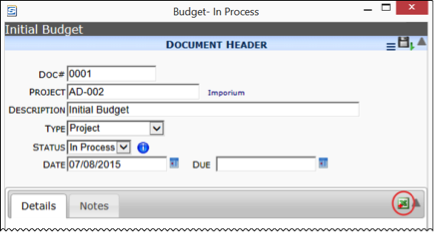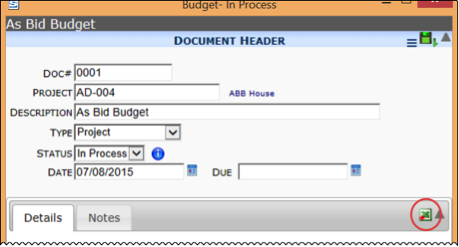sfPMS keeps track of your BFA information in three “buckets” – Original, Estimate at Completion (EAC), and Forecast at Completion (FAC).
Depending on your implementation and setup, your budgets may function as follows.
If you use the default setup, you enter data for your budget through the Initial Budget document’s BFA workbook.


This data is written to the Original, EAC, and FAC buckets. From this point on, the three budget buckets have their own lineage and audit trail. As you create and approve additional Budget documents to revise your budget through additional BFA workbooks, your changes are written to the EAC bucket, which updates your “current” budget. The Original data and FAC are left alone. Change Order, Commitment and CCO documents can also make changes to the EAC. On the other hand, when you make changes through a Forecast document, those changes are written to the FAC bucket. The Original data and EAC are left alone.
If you use the typical Bid Budget setup, you first enter data for your estimated budget through the As Bid Budget document’s BFA workbook.

This data is written to the Original bucket only. Assuming the project is awarded, you then enter Initial EAC data into your next Budget’s BFA workbook. This data is written to the EAC and FAC buckets. From this point on, the three budget buckets have their own lineage and audit trail. As you create and approve additional Budget documents to revise your budget through additional BFA workbooks, your changes are written to the EAC bucket, which updates your “current” budget. The Original data and FAC are left alone. Change Order, Commitment and CCO documents can also make changes to the EAC. On the other hand, when you make changes through a Forecast document, those changes are written to the FAC bucket. The Original data and EAC are left alone
Each Budget and Forecast document contains an entire snapshot of the financial state of your project at the time the document was created. Months later you can reopen any of these documents and see how the EAC, FAC and Original budgets compared at that time. By going from budget to budget (or forecast to forecast) you can revisit the history of how the current budget (or forecast budget) evolved.
